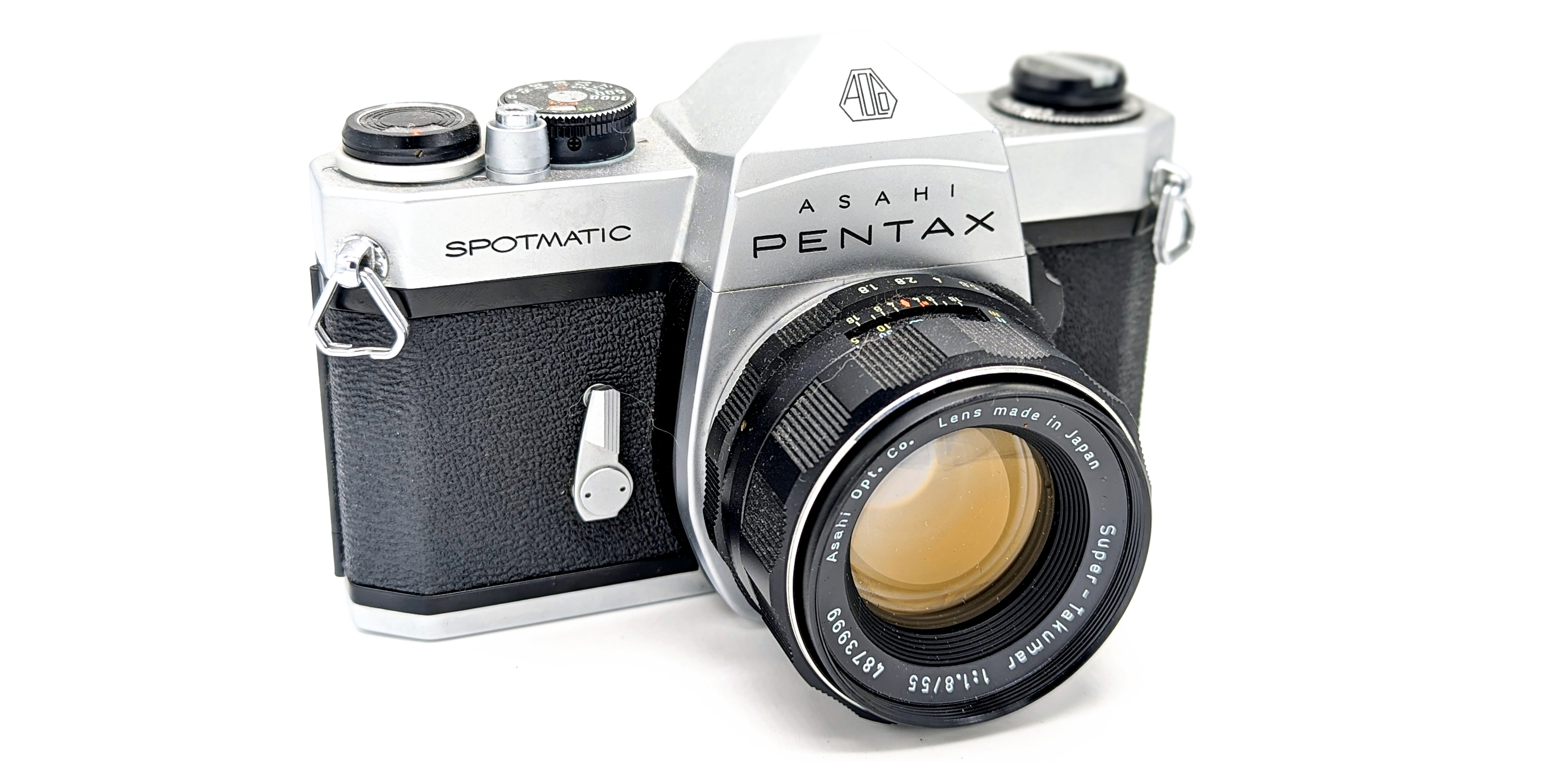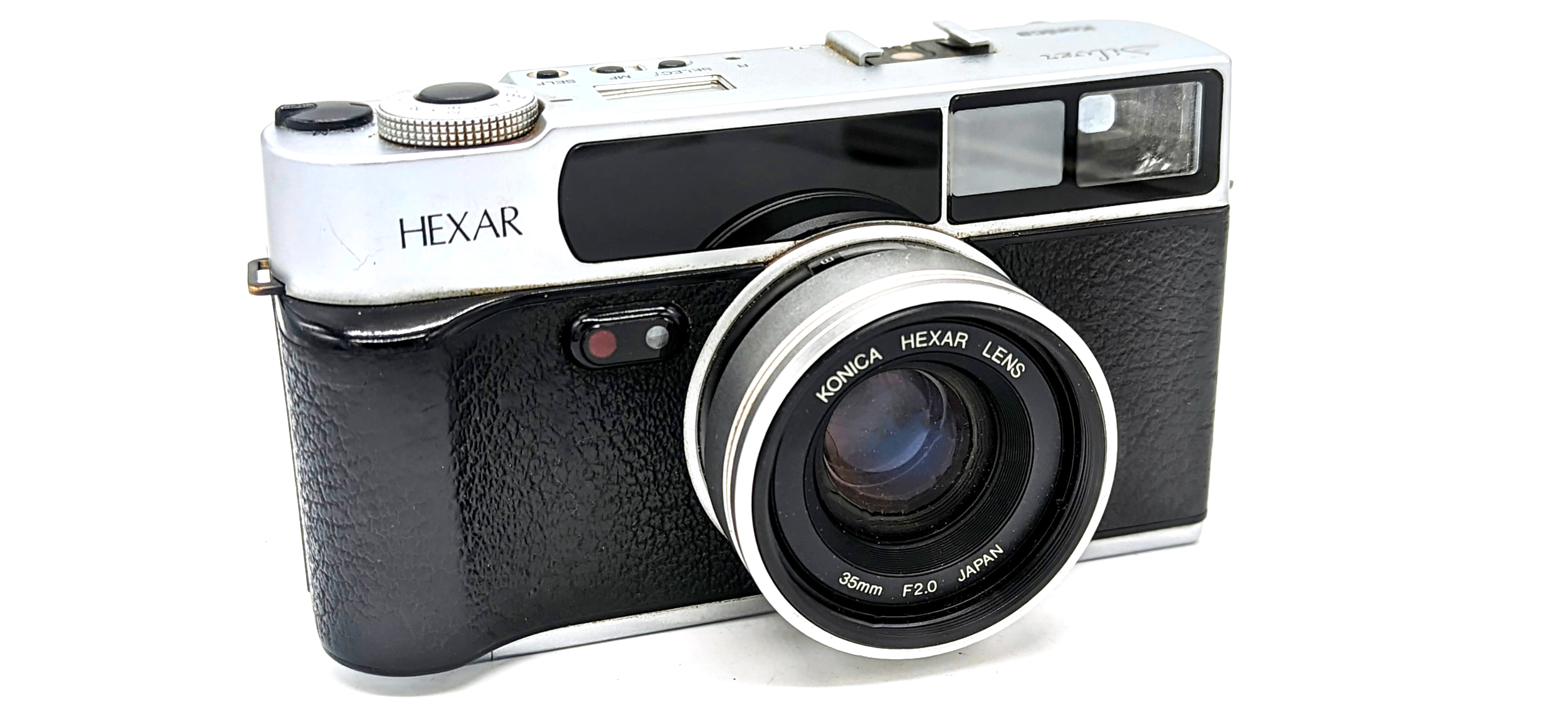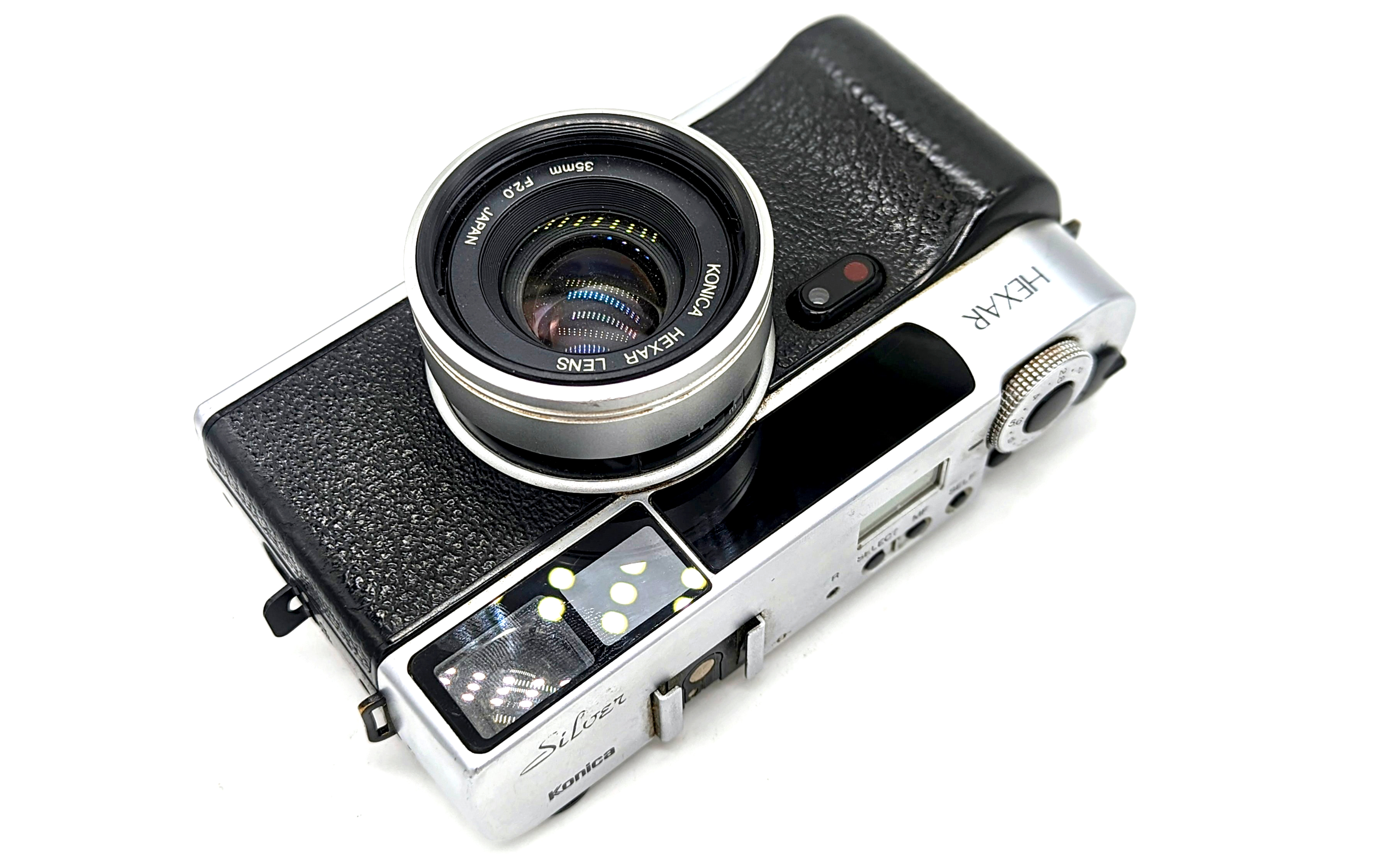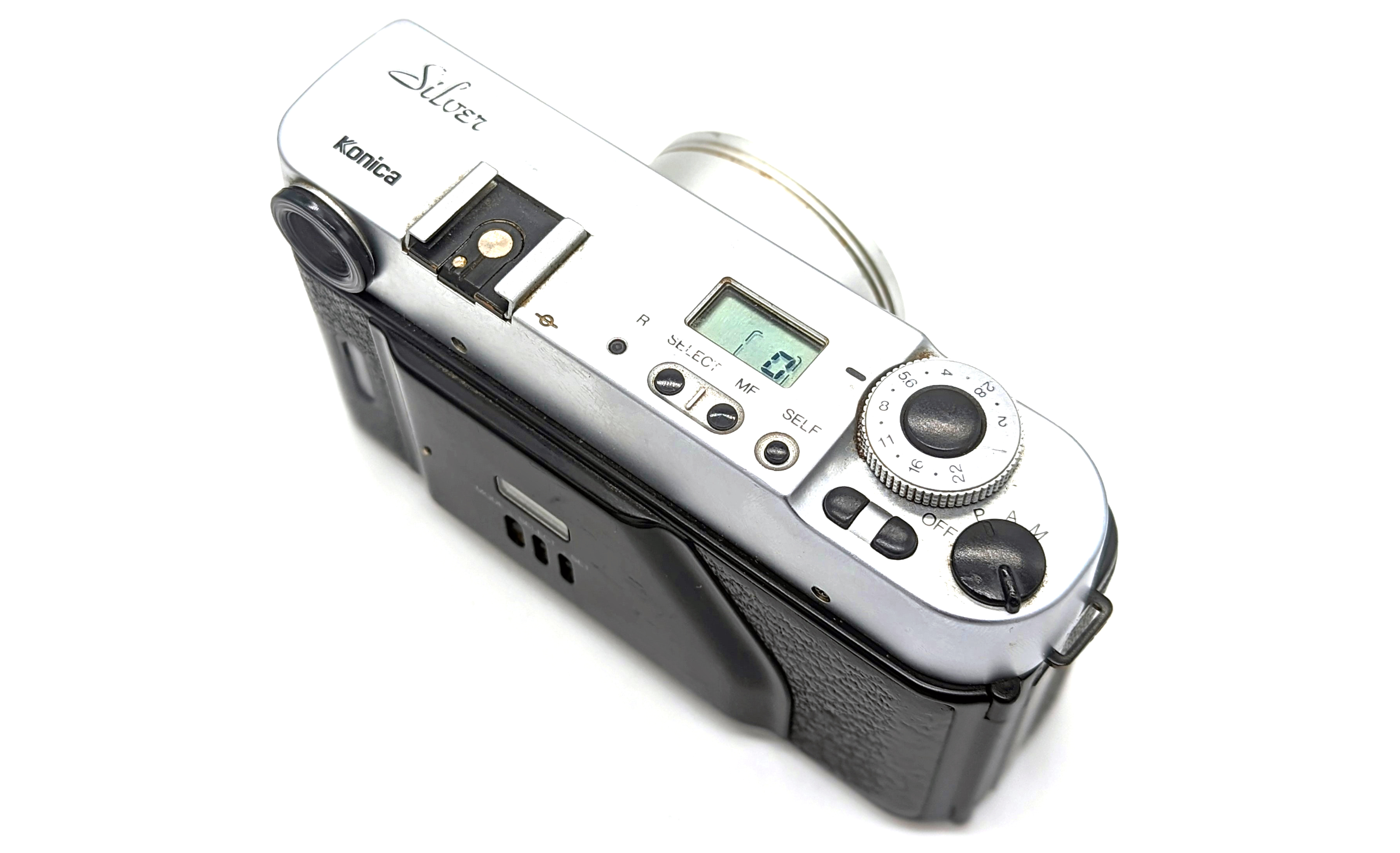
As an addendum to this article, here is a list of M42 camera bodies (post-1948) by technological generation. This is not a complete list and is an ongoing project. I am leaving out Edixa models and most rebadged bodies (Revueflex, Vivitar, Porst, Sears, etc.) for now. Where there is an exact modern silver oxide equivalent to the original battery, that is listed. Where the original battery was a mercury type without an exact silver/alkaline equivalent, the mercury is listed.
First Generation
Non-Metered + Manual Stop-Down Aperture Control
| Model | Year | Notes |
| Contax S | 1949 | Built-in Pentaprism |
| Contax D | 1952 | Built-in Pentaprism |
| Contax E | 1956 | Contax D with Uncoupled Selenium Meter |
| Pentax | 1957 | Built-in Pentaprism & Lever Advance |
| Pentax S | 1958 | Built-in Pentaprism & Lever Advance |
| Petri Penta | 1959 | Pentaprism & Lever Advance |
| Praktica | 1949 | Waist-Level Finder |
| Praktica FX | 1952 | Waist-Level Finder |
| Praktica MX | 1952 | Waist-Level Finder |
| Praktiflex | 1949 | Waist-Level Finder |
| Zenit E | 1965 | Uncoupled Selenium Meter |
| Zenit B | 1968 |
Second Generation
Non-Metered + Auto-Diaphragm Operation
| Model | Year | Battery | Notes |
| Contax/Pentacon F | 1956 | None | First 2nd Generation Body |
| Contax/Pentacon FB | 1956 | None | Contax F with Uncoupled Selenium Meter |
| Contax/Pentacon FM | 1958 | None | Contax F Split-Screen Focusing Aid |
| Contax/Pentacon FBM | 1958 | None | Contax FM with Uncoupled Selenium Meter |
| Pentax K | 1958 | None | |
| Pentax S2 | 1959 | None | |
| Pentax S1 | 1959 | None | |
| Pentax S3 | 1961 | None | |
| Pentax SV | 1962 | None | |
| Pentax S1a | 1962 | None | |
| Pentax Spotmatic SL | 1968 | None | |
| Praktica FX2 | 1956 | None | |
| Praktica FX3 | 1956 | None | |
| Praktica IV | 1959 | None | |
| Praktica IVB | 1961 | None | Selenium Meter |
| Praktica VF | 1964 | None | |
| Praktica Nova | 1964 | None | |
| Praktica VFB | 1965 | None | Selenium Meter |
| Praktica Nova B | 1966 | None | Selenium Meter |
| Pentaflex SL | 1967 | None | |
| Praktica PL Nova | 1967 | None | |
| Praktica PL Electronic | 1968 | PX625 | First SLR with Electronically-Controlled Shutter |
| Praktica L Series | 1969 | None | |
| Praktica LB Series | 1972 | None | Selenium Meter |
| Yashica Penta J | 1961 | None | Optional Clip-On Meter Coupled to Shutter Speed |
| Yashica J-3 | 1963 | RM-1 | Non-TTL Light Meter Not Coupled to Aperture |
| Yashica J-P | 1964 | None | Optional Clip-On Meter Coupled to Shutter Speed |
| Yashica J-5 | 1964 | PX625 | Non-TTL Light Meter Not Coupled to Aperture |
| Yashica J-4 | 1965 | PX625 | Non-TTL Light Meter Not Coupled to Aperture |
| Yashica J-7 | 1968 | PX625 | Non-TTL Light Meter Not Coupled to Aperture |
Third Generation
Stop Down TTL Light Metering + Auto-Diaphragm Operation
| Model | Year | Battery | Notes |
| Chinon M-1 | 1972 | PX625 | |
| Chinon CX | 1974 | PX625 | |
| Chinon CS | 1978 | PX625 | |
| Chinon SLR | 1979 | ||
| Chinon CS-4 | 1980 | 2 x SR44 | |
| Cosina Hi-Lite | 1968 | PX675 | |
| Cosina Hi-Lite DL | 1970 | PX675 | |
| Cosina SLR | 1971 | ||
| Cosina Hi-Lite 202 | 1975 | PX675 | |
| Cosina 1000S | 1976? | PX675 | |
| Cosina 4000S | 1976? | PX675 | |
| Exakta TL 1000 / TL 500 | 1972 | PX625 | |
| Exakta Twin TL 42 | 1973 | PX675 | |
| Fujica ST701 | 1970 | 2 x PX400 | |
| Fujica ST601 | 1975 | 2 x PX400 | |
| Fujica ST605 | 1976 | 2 x SR44 | |
| Fujica ST605N | 1978 | 2 x SR44 | |
| Miranda Sensomat TM | 1974 | PX675 | |
| Pentax Spotmatic | 1964 | PX400 | First 3rd Generation Body |
| Pentax Spotmatic 500 | 1971 | PX400 | |
| Pentax Spotmatic II | 1971 | PX400 | |
| Pentax Spotmatc IIa | 1971 | PX400 | |
| Pentax Spotmatic SP 1000 | 1974 | PX400 | |
| Praktica Super TL | 1968 | PX625 | |
| Praktica LTL Series | 1970 | PX625 | |
| Praktica Super TL 2 | 1975 | PX625 | |
| Praktica TL | 1976 | PX625 | |
| Praktica DTL Series | 1978 | V21PX | |
| Praktica MTL 3 | 1984 | PX625 | |
| Praktica MTL 5 | 1984 | PX625 | |
| Praktica MTL 50 | 1985 | 4 x SR44 | |
| Ricoh Singlex TLS | 1967 | PX675 | |
| Ricoh TLS 401 | 1970 | PX625 | |
| Ricoh SLX 500 | 1975 | PX625 | |
| Ricoh Singlex II | 1976 | PX625 | |
| Voigtlander Bessaflex TM | 2003 | 2 x SR44 | |
| Yashica TL Super | 1966 | SR44 | |
| Yashica TL | 1968 | SR44 | |
| Yashica TL Electro X | 1968 | PX28 | Electronic Shutter |
| Yashica TL-E | 1969 | PX28? | Electronic Shutter |
| Yashica TL Electro X ITS | 1971 | Electronic Shutter | |
| Yashica TL Electro | 1972 | Electronic Shutter | |
| Zeiss Ikon Icarex 35 / 35S TM | 1969 | PX625 | |
| Zenit 19 | 1979 | 2 x PX625 |
Fourth Generation
Open-Aperture TTL Light Metering with Proprietary M42 Lenses
| Model | Year | Battery | Notes |
| Fujica ST801 | 1972 | S28PX | |
| Fujica ST705 | 1976 | 2 x SR44 | |
| Fujica ST605 II | 1978 | 2 x SR44 | |
| Fujica ST705W | 1978 | 2 x SR44 | |
| Mamiya DSX 500 / 1000 | 1974 | SR44 | |
| Mamiya MSX 500 / 1000 | 1974 | SR44 | |
| Olympus FTL | 1971 | PX625 | |
| Pentacon Super | 1968 | PX625 | First 4th Generation Body |
| Pentax Spotmatic F | 1973 | PX625 | |
| Praktica LLC | 1969 | V21PX | |
| Praktica VLC Series | 1974 | V21PX | |
| Praktica PLC Series | 1975 | V21PX | |
| Voigtlander VSL1 | 1974 | PX625 | |
| Zeiss Ikon SL706 | 1971 | PX625 |
Fifth Generation
Aperture or Shutter Speed Priority Autoexposure with Proprietary Lenses
| Model | Year | Battery | Notes |
| Exakta FE 2000 | 1977 | PX675 | Shutter-Speed Priority Autoexposure |
| Fujica ST901 | 1974 | 4 x SR44 | |
| Fujica AZ-1 | 1978 | 3 x SR44 | |
| Pentax ES | 1971 | First Fifth Generation Body | |
| Pentax ES II | 1973 | 4 x SR44 | |
| Praktica EE2 | 1977 | V21PX | |
| Praktica EE3 | 1979 | V21PX | |
| Ricoh Auto TLS EE | 1976 | PX675 | Shutter-Speed Priority Autoexposure |
| Yashica TL Electro AX | 1971 | A32PX | Button to Open to Full Aperture |
| Zenit 18 | 1980 | Only AE with the Zenitar ME1 50mm f/1.7 |
Chinon / Cosina / Zenit System
Stop-Down Metering Activated Through Half-Press of Shutter Button
| Model | Year | Battery | Notes | Others Versions |
| Chinon CE | 1974 | S28PX | Aperture-Priority; 1/2000 Top Speed | Revueflex 4000 EE |
| Chinon CE-II | 1976 | S28PX | Aperture-Priority; 1/2000 Top Speed | Revueflex 4004 / 4000 EE / 4004 / 5005; Porst Reflex M-CE & C-EE |
| Chinon CX-II | 1976 | PX625 | No Autoexposure | Revueflex 3000 SM & 3003 |
| Chinon CE-3 | 1978 | 2 x SR44 | Aperture-Priority | Revueflex AC1 |
| Chinon CM-1 / CM-3 | 1978 | 2 x SR44 | No Autoexposure | Revueflex SC1 |
| Cosina Hi-Lite EC | 1972 | Aperture-Priority; 1/2000 Top Speed | ||
| Cosina Hi-Lite 402 | PX625 | No Autoexposure | ||
| Cosina Hi-Lite 405 | 1974 | PX625 | No Autoexposure; Spot & Center Metering | Revueflex SM302; Porst Reflex C-TL Super |
| Cosina Hi-Lite ECL | 1977 | S28PX | Aperture-Priority; 1/2000 Top Speed | Revueflex EE 303 |
| Cosina CSL | 1978 | 2 x SR44 | No Autoexposure | |
| Cosina CSM | 1978 | 2 x SR44 | No Autoexposure | Porst Compact-Reflex; Petri MF-2 |
| Cosina CSR | 1978 | 2 x SR44 | No Autoexposure; Spot & Center Metering | |
| Zenit 12 | 1983 | 2 x SR43 | No Autoexposure | |
| Zenit 122 | 1990 | 2 x SR43 | No Autoexposure | |
| Zenit 312M | 1999 | 2 x SR43 | No Autoexposure | |
| Zenit 412DX / 412LS | 2000 / 2002 | 2 x SR43 | No Autoexposure |


